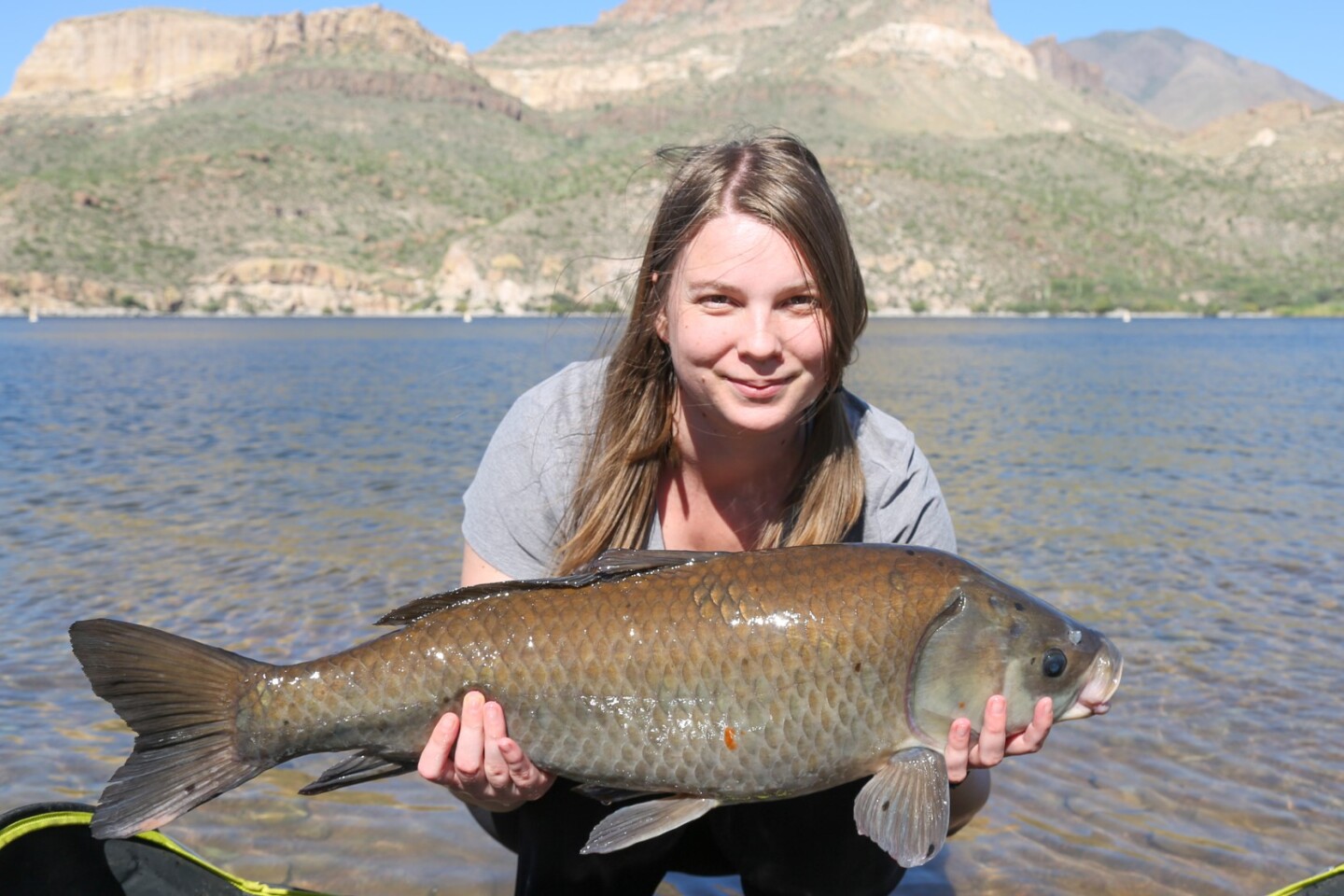FARGO — Can a humble and underappreciated fish be the key to discovering the fountain of youth? A researcher who graduated from Fargo Oak Grove High �������� and Concordia College considers the fish at least worth studying.
According to a recent study published in Scientific Reports and led by Alec Lackmann, an assistant professor at the University of Minnesota Duluth originally from Fargo, three species of buffalofish living in a reservoir in the Arizona desert are living to be more than 100 years old. It's just the second genus of animal for which three or more species are known to live longer than a century.
ADVERTISEMENT
Lackmann and his colleagues believe the fish could lead to further study across disciplines like gerontology and senescence, which is the gradual deterioration of functional characteristics as a living organism gets older.
Essentially, the question is this: What can we learn from 100-year-old fish and their ability to postpone agedness?
"What is the buffalofishes' fountain of youth?" Lackmann said. "There could be something interesting there."

Buffalofish, Latin name Ictiobus, are a genus of fish native to the central United States, including Minnesota and North Dakota. They are the largest of the freshwater suckers, long disregarded as "rough fish" or "trash fish" because of their superficial resemblance to invasive species like carp.
But while he was working on his Ph.D. at North Dakota State University . With the help of bowfishers and others, Lackmann collected samples of bigmouth buffalo from Minnesota lakes and aged them using ear stones (otoliths) and bomb radiocarbon dating.
Of the nearly 400 fish aged in the 2019 study — which included the Otter Tail and Pelican river watersheds near Pelican Rapids, Minnesota — five exceeded 100 years and nearly 200 fish were in their 80s and 90s, often with many decades in between successful reproductions. The oldest was 112 years old and came from Crystal Lake. The study also found the fish accrue black and orange spots as they age.
It was previously believed buffalofishes' life span was in the range of 25 years.
ADVERTISEMENT
The 2019 study eventually led an angler in Arizona to contact Lackmann about buffalofish in Apache Lake, a reservoir on the Salt River near Phoenix. Stuart Black and a group of catch-and-release anglers recently discovered how to catch buffalofish on rod-and-line. The fish were large and had distinctive orange and black spots on them.

Wanting to learn more about the fish, they eventually found Lackmann's research from Minnesota. Black reached out to Lackmann about the fish in Apache Lake, inviting Lackmann and a group of researchers to the lake, where any fish caught would be donated to science.
What Lackmann and his research team found was remarkable. The bigmouth buffalo, smallmouth buffalo and black buffalo aged were consistently old, with the vast majority 85 years old or older. All three species had fish more than 100 years old.
"To our knowledge, it is the only known lake in the world that has three species of fish greater than 100 years old currently living together," Lackmann said. "It is incredible."
The species aren't native to the Arizona desert, but records show the government stocked buffalofish into Roosevelt Lake — a reservoir upstream of Apache Lake — in 1918. Those fish were likely from a hatchery in Iowa. Evidence indicates some of the buffalofish from the 1918 stocking are likely still alive today and that many of the buffalofish in Apache Lake hatched in the 1920s.
Buffalofish have long been a neglected group of species because they're viewed as rough fish by many.

"Little did we know, we were neglecting some of the most fascinating fishes in North America," Lackmann said.
ADVERTISEMENT
In Canada, for example, bigmouth buffalo more than 120 years old have been discovered, and gaps between successful reproduction can approach 50 years.
"Their biology is astonishing. It is amazing that a life strategy like this could evolve," Lackmann said.
Lackmann thinks the longevity of buffalofish will eventually play a role in studying the aging and senescence of animals broadly, potentially even to gain insights into our own aging process.
By living to such old ages with such frequency, it appears likely the buffalofish can avoid disease susceptibility common in most other animals.

We know how humans deteriorate physically as we age and how difficult it is for elderly people to recover from injuries and disease. That doesn't appear to be the case with buffalofish, at least for individuals in their 90s and 100s.
"Such fish are generally robust and in good condition," Lackmann said.
Research published in 2021, led by his colleague Derek Sauer, who earned a master's degree from NDSU and is now completing his Ph.D. at University of Auckland in New Zealand, found that bigmouth buffalo in their 80s and 90s were still improving physiologically relative to younger individuals.
ADVERTISEMENT
"How do they do that? If you're in the field of gerontology, it could be very important to understand what these fish have that allows them to improve at such an advanced age," Lackmann said. "They should be monitored so that we can further study and understand their DNA, their physiology, their ability to fight infection and disease."
Do so and we might just find the fountain of youth in the most unusual spot — a once disrespected fish in the Arizona desert.













